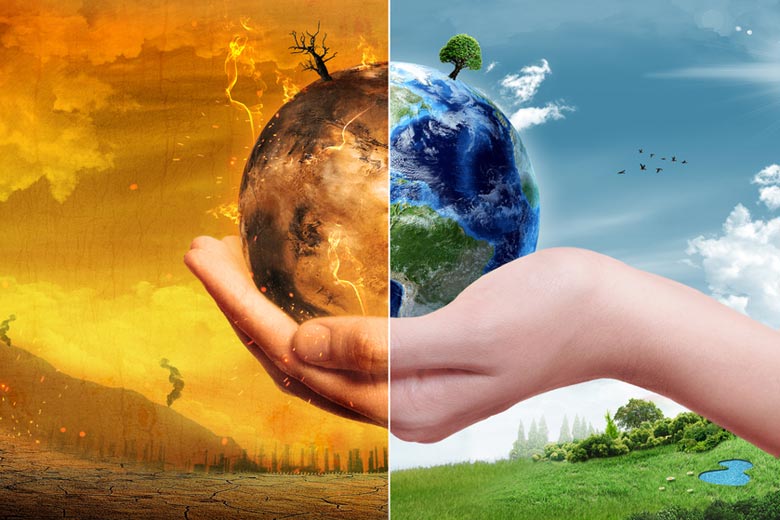Blog #2 Katherine Carbonell
After doing the theme project there are many things to say about all of the presentations and all I have learned in these days. First let's start with he first group which the presentation was about infrastructure. Infrastructure refers to the basic physical systems of a business, region, or nation. Examples of infrastructure include transportation systems, communication networks, sewage, water, and electric systems. Projects related to infrastructure improvements may be funded publicly, privately, or through public-private partnerships. Infrastructure encompasses a wide range of systems and structures for both large and small-scale organizational frameworks as long as physical components are required. The electrical grid of a city, state, or country, for example, is infrastructure because of the technology used and the intention to provide a service to the places it serves. The physical wiring and components that make up a firm's data network in a specific location are also infrastructure for that company, as they are required to enable commercial activities. Infrastructure is frequently financed, controlled, supervised, or regulated by the government since it often involves the production of public goods or goods that lend themselves to natural monopoly production. Direct government production or production under a tightly regulated, legally sanctioned, and frequently subsidized monopoly are the most common examples.
When it comes to much smaller scales, infrastructure can sometimes take on the features of club commodities or items most easily produced by regional monopolies. As such, it can be provided through localized formal or informal collective action structures or within the context of a private enterprise generating infrastructure for internal use. There are several different types of infrastructure.Institutions that help maintain the economy are made up of soft infrastructure. It frequently necessitates the use of human resources and aids in the delivery of particular services to the general public. Health care, financial institutions, governmental systems, law enforcement, and educational systems are all examples. Hard infrastructure makes up the physical systems that make it necessary to run a modern, industrialized nation. Critical infrastructure is defined by a government as being essential to the functioning of a society and economy. These assets include facilities for shelter and heating, telecommunication, public health, agriculture, etc.

Moving on next to the gender inequality. Institutions that help maintain the economy are made up of soft infrastructure. It frequently necessitates the use of human resources and aids in the delivery of particular services to the general public. Health care, financial institutions, governmental systems, law enforcement, and educational systems are all examples. Gender prejudice and discrimination, as a result, originate in childhood. Girls and boys are subjected to differential gender norms regarding expectations, access to resources, and opportunities from the moment they are born, with lasting effects in their homes, schools, and communities.
For example, boys around the world are frequently encouraged to attend school and obtain an education in order to prepare for work, whereas girls are generally burdened with home chores that prevent them from attending school, increasing the likelihood of child marriage and pregnancy.Gender equality is not only a basic human right, but also a prerequisite for a peaceful, prosperous, and long-term future. Gender equality means a world in which men and women, girls and boys, have equal access to resources, opportunities, and protections. Empowering females at a young age has been shown to have long-term and compounding advantages throughout their lives. Girls are given the tools and abilities they need to be good change makers in their homes and communities when they are encouraged to participate in civic and political settings. Girls are the experts on their own lives, goals, and needs, and they are powerful forces for gender equality in the globe. The right to vote is a fundamental right as it involves the capacity to contribute to the election of the government that will represent your views. The right to vote, and how women were restricted or prevented from voting, is one of the most essential and, thanks to the suffrage and suffragette movements, certainly one of the most well-known aspects of gender discrimination. The suffrage movement (particularly associated with the leadership of Milicent Fawcett) sought to achieve equality for women through peaceful and legal means. Everyone gains when girls are given the opportunity to lead their lives, express their thoughts, and make decisions about their futures. When we battle gender inequality, history shows that civilizations become more stable, safe, and rich, with happier, better educated inhabitants.

Lastly on the presentations was group three, the presentation was about climate change. Long-term changes in temperature and weather patterns are referred to as climate change. These movements could be due to natural causes, such as oscillations in the solar cycle. However, human activities have been the primary cause of climate change since the 1800s, owing to the combustion of fossil fuels such as coal, oil, and gas. Fossil fuel combustion produces greenhouse gas emissions, which act as a blanket around the Earth, trapping the sun's heat and boosting temperatures.Carbon dioxide and methane are two examples of greenhouse gas emissions that contribute to climate change. These are produced by, for example, utilizing gasoline to drive a car or coal to heat a building. Carbon dioxide is released when land and forests are cleared. The main emitters include energy, industry, transportation, buildings, agriculture, and land use.Many people believe that climate change primarily entails higher temperatures. However, the rise in temperature is merely the beginning of the narrative. Changes in one place can influence changes in all others since the Earth is a system in which everything is connected.
Intense droughts, water scarcity, devastating fires, rising sea levels, flooding, melting polar ice, catastrophic storms, and dwindling biodiversity are now among the repercussions of climate change. Climate change can affect our health, ability to grow food, housing, safety and work. Some of us are already more vulnerable to climate impacts, such as people living in developing countries. Everyone must take climate action, but people and countries creating more of the problem have a greater responsibility. Many climate change solutions have the potential to improve our lives while also saving the environment. Global frameworks and agreements, such as the Sustainable Development Goals, the UN Framework Convention on Climate Change, and the Paris Agreement, are also in place to steer progress. Cutting emissions, adapting to climate consequences, and financing essential modifications are three main types of action. Switching from fossil fuels to renewables such as solar and wind will lower the emissions that cause climate change. But we need to get started right away. While a rising number of countries are pledging to achieve net zero emissions by 2050, around half of all emissions reductions must be implemented by 2030 to keep global warming below 1.5°C. Production of fossil fuels must drop by about 6%. People, homes, businesses, livelihoods, infrastructure, and natural ecosystems are all protected through adapting to climate impacts. It encompasses both current and potential future effects. Adaptation will be required everywhere, but it must be prioritized immediately for the most vulnerable people who have the fewest means to deal with climate risks. The rate of return on investment might be rather high. Early warning systems for disasters, for example, can save lives and property while recouping up to ten times their initial investment.

This is all I learned from all of the presentations, the topics where very important and eye opening, seeing how many things are affecting our world right now, women's rights, climate change and infrastructure. Every group did a wonderful job on their project and when presenting they all did amazingly. These projects were very informative and might have taught some students new information that they possibly were not aware was going on in the world.




Comments
Post a Comment